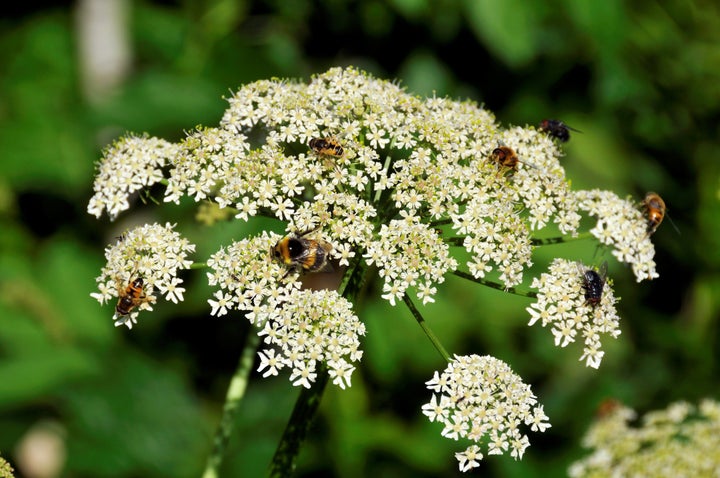A father-of-one was left in severe agony after brushing against a common weed which caused his leg to blister.
Nathan Davies, 32, came into contact with common hogweed when gardening at home and his leg ended up covered with blisters which then became infected.
Davies told Wales Online he wanted to cut off his leg because of the pain. He ended up in hospital, needing multiple emergency operations, and it was unsure whether he’d be able to walk again.
He has shared his story to warn others about the potential dangers of the plant. Here’s what you need to know about the plant.

What is common hogweed?
Common hogweed tends to be less dangerous than giant hogweed, however its sap can still cause skin irritation. It’s recommended that people gardening and pulling up the weeds wear gloves. Any injuries sustained or blisters which appear after gardening should be looked at by a health professional to ensure they don’t become infected.
How is it different to giant hogweed?
Common hogweed is similar in its appearance to giant hogweed, which is a tall weed with tiny white flowers that grow in clusters. The sap from giant hogweed contains toxic chemicals which are known as furanocoumarins. When these chemicals come into contact with skin and are exposed to sunlight, a reaction occurs called phytophotodermatitis, according to the Royal Horticultural Society. This usually results in reddening of the skin which is often followed by severe blistering and burns. The sap can prove even more dangerous if it gets into a person’s eyes as it can cause temporary - or even permanent - blindness.
Size is one of the key distinguishing factors between common hogweed and giant hogweed, according to Wild Food UK. The former will grow to roughly two metres tall (possibly three metres if it’s near water), whereas giant hogweed will often grow to four metres or more.
Common hogweed seems to like growing by roadsides more than riversides, whereas giant hogweed is almost exclusively a riverside plant, and it tends to have “smaller, softer, less shiny and more rounded” leaves. Conversely, giant hogweed has larger, smoother and shiner leaves - usually with a serrated edge.